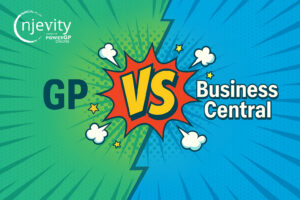In my 20 plus years of being in the ERP industry, I’ve never heard of the term Postmodern ERP system – until recently. Since I’m a very curious person, I needed to find out what exactly a Postmodern ERP system is and what the impact might be if a company implemented one.
What does Postmodern ERP mean?
According to Gartner, “Postmodern ERP is a technology strategy that automates and links administrative and operational business capabilities (such as finance, HR, purchasing, manufacturing and distribution) with appropriate levels of integration that balance the benefits of vendor-delivered integration against business flexibility and agility. This definition highlights that there are two categories of ERP strategy: administrative and operational.
Administrative ERP Strategy. This focuses on the administrative aspects of ERP, primarily financials, human capital management and indirect procurement. Some industries don’t need operational capabilities, such as manufacturing or distribution, so they focus their ERP strategy on administrative functions, perhaps augmented by some industry-specific functionality (such as grant management in the higher education and public sectors, or project resourcing, billing and costing in professional services). These industries are generally characterized as service-centric industries.
Operational ERP Strategy. Organizations in manufacturing, distribution, retail, etc. (sometimes referred to as product-centric industries) are likely to extend their ERP strategy beyond administrative functions into operational areas, such as order management, manufacturing and supply chain, to maximize operational efficiencies. Also, asset-intensive organizations, such as utilities and mining, may include operations and maintenance of assets in their ERP strategy. These organizations can realize benefits from the integration between administrative and operational capabilities, for example, where operational transactions that have a financial impact are reflected directly in the financial modules.”
What does this mean in the real world?
In simple terms, a Postmodern ERP system allows you to make use of the best app for the job compared to purchasing an all-in-one solution with potentially limited functionality. There are pros and cons to each approach, but here is a simple comparison:
The features of an app are more likely to provide the specific functionality needed to better a workflow. These independent apps have more knowledgeable experts since they are focused on target areas, but they often also come with smaller companies. The key here is to be sure how easily they can be integrated into your system.
Vs.
An all-in-one system provides the benefit of being big company with many resources. However, the functionality of these systems is often broad to be useful to many rather than the unique few. Though, they can sometimes be customized.
Dynamics GP has been using the strategy of best apps for years. The product road map focused on broad horizontal functionality to work for the many with an easy to integrate strategy to help it be able to be specific for the few. Then, PowerGP Online created PowerGP Connect (an API tool) to make integrations even easier for Dynamics GP in a cloud setting.
For years, NetSuite, Intact, Acumatica and others have considered the best app approached to be a negative concept – which I believe was naive. A software company who focuses on being able to provide a solution to specific niche areas will always have better functionality than a broad solution trying to meet the needs of every company in the world.
Here are a few examples of niche versus broad applications:
- Dynamics GP doesn’t have a built-in CRM application, but it integrates with whichever CRM you want to use. Why create an entirely new CRM solution and force users into it when there are already great ones available in the market today?
- Dynamics GP has a Manufacturing solution that works great for companies with specific requirements, but many Dynamics GP customers are manufacturers who don’t use Dynamics GP Manufacturing. They certainly can, but they don’t have to. Instead, they can use the product best suited for them, and then they integrate it into the best “financials app” for mid-sized businesses – which is Dynamics GP.
I find it interesting that these big ERP vendors are now calling themselves Postmodern ERP solutions. Maybe they believe it’s a buzzword to be used in marketing instead of being a real, long-term product strategy. Since Dynamics GP has had this strategy for a long time, it’s hard to suddenly call it “Postmodern” even though it truly is.
I guess we had it right all along.
If you would like to learn more, you can contact us at sales@njevity.com








